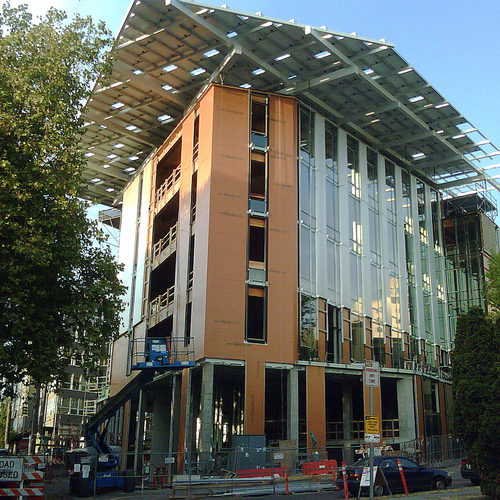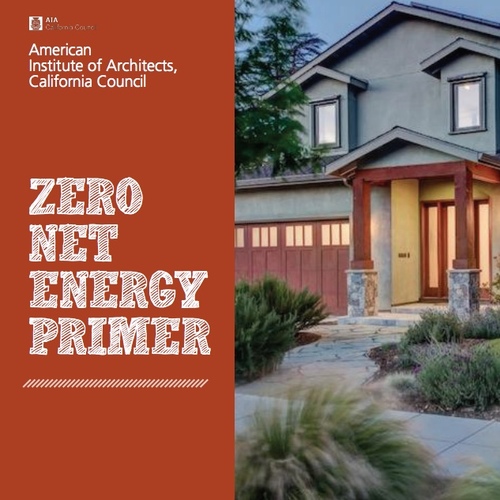
A Texas-based real estate developer hopes to break ground late next year on a 4,500-unit net-zero-ready community in Fort Collins, Colorado. It would be the largest development of its kind in the U.S.
Every house in the development would be built to meet certification requirements of the U.S. Department of Energy’s Zero Energy Ready Home program. Houses will have to satisfy a number of water- and energy-efficiency benchmarks and indoor air quality standards.
The developer of the project, called Montava, is HF2M, a privately held real estate development company based in Round Rock, Texas. Montava would be built on 860 acres of undeveloped land just a few miles from downtown Fort Collins.
Max Moss, HF2M’s Colorado president, said in a telephone call that Montava could take up to 25 years to complete. When finished, the development would include a 40-acre organic farm, its own school system, a regional park developed in conjunction with Fort Collins, and retail shops and restaurants.
“Everything we’re doing is being done somewhere well, but it’s not being done in one place,” Moss said. “And that’s what’s unique about this project. It’s pretty exciting.”
Key to the project is an approach to community planning called “new urbanism” that is designed to minimize suburban sprawl and lighten the environmental impact of development. For that, Montava will draw on the experience of DPZ, a planning firm with dozens of large projects to its credit.
Moss said the project will feel nothing like a typical suburban housing development.
“It’s going to be a very craftsman-feel community that is really focused and oriented toward pedestrians and people and not cars,” he said. “We’re pulling houses closer to the street, [there will be] sidewalks, front porches and a wide variety of housing types — like we used to build into communities 50 years ago.”
If all goes well — and there are still significant hurdles to clear — HF2 M could start building by the third quarter of 2019.
Two builders will be involved
The developer will draw on the construction experience of two firms, Mandalay Homes and Thrive Home Builders, both of which focus on energy-efficient designs.
Mandalay builds only zero energy ready homes, says the company’s chief technology officer, Geoff Ferrell. The Arizona-based company produced 208 of them last year, and it has a sizeable zero energy ready development of its own in the works — a 2,900-unit project called Jasper in Prescott Valley, Arizona.
Ferrell said Moss approached the company because of its involvement in the Zero Energy Ready Homes program and asked whether its approach to building houses could be scaled up for an entire community.
“Can it be applied to commercial buildings, or farms, or community centers?” Ferrell said. “And how can you take that concept and move it beyond the lot lines and take it to very aspect of the community?”
Ferrell said HF2M’s proposal amounts to building a sustainable community from the ground up, and it would demonstrate how light an environmental footprint is possible in a development of that size.
Mandalay Homes began its conversion to a zero-energy-ready-only business model after its owner, Dave Everson, was asked by the City of Phoenix to complete some abandoned residential projects, what Ferrell called “zombie neighborhoods.” In time, the company moved completely into the realm of high-efficiency construction.
At first, it cost the company $4.50 to $6 per square foot more to build a house that would earn a HERS rating of 50 when compared to a house that simply met current codes. Today, Ferrell said, Mandalay can build a house with a HERS rating of 46 or 47 for almost the same cost as a house built to the Energy Star standard.
“We don’t do anything exotic,” he said. “We’re not reinventing wheels here. We’re taking products off the shelf — better insulation, better HVAC equipment, better ventilation equipment.”
He said the company’s marketing strategy is to emphasize the money that prospective owners will be able to save every month, which translates into more money to spend on amenities.
“When you don’t make people choose between granite [counters] and energy efficiency, that’s a really powerful proposition,” he said. “Our goal has been to drive the cost of our houses down to the point where we can just offer [a low HERS score] as standard. We don’t offer optional energy anything. Our home comes the way it comes.”
Embracing community values
Moss said the thinking behind the Montava community evolved in part because of the city’s stated desire to develop housing on the property that was energy- and water-efficient and incorporated some type of agriculture.
A master plan submitted to the city late last year cited the developer’s “early engagement” with city officials, local utility, and adjacent landowners and noted a week-long design charette had covered a variety of issues.
“Many of those values the city cares about we have found mechanisms to accomplish,” he said. “We have great farming partners, builders who build zero-ready homes, and a great plan put together by DPZ. It’s many things coming together in a really neat way that enables something that isn’t being done anywhere else in the country.”
He said Montava would include a broad swath of housing types and price ranges, from “tiny homes” all the way to large, custom-built houses. “But the bulk of what you have to deliver is what the market is crying out for,” he added. “Our challenge is not to build something and hope people buy. It’s to build what the market wants.”
At least one big roadblock remains
One potentially serious threat to the project is a delay by the Fort Collins City Council to approve a funding mechanism that would help developers pay for streets and waterlines.
According to an article in The Coloradoan, the council earlier this month decided to delay a decision on sending a measure creating a metro district in the area to voters. Some councilors were concerned about how a metro district would affect plans for affordable housing.
Once metro districts are created, residents pay higher taxes until public improvements are paid off. HF2M has asked that the metro district pay $203 million out of an estimated $325 million needed for infrastructure construction, the newspaper said, which would increase property taxes by an estimated $2,000 for a median-priced house until the debt is paid off.
If the council’s delay pushes a city vote to November 2019, the project “absolutely” would be in trouble, Moss said.
“Every substantial development in Colorado has a metro district for a reason,” he told the newspaper. “It’s not because of greedy developers. It’s because of the risk of residential development and the way they’re financed. They can’t be done without them. It’s just that simple.”
The council is scheduled to take up the issue again later this month.
Weekly Newsletter
Get building science and energy efficiency advice, plus special offers, in your inbox.















0 Comments
Log in or create an account to post a comment.
Sign up Log in